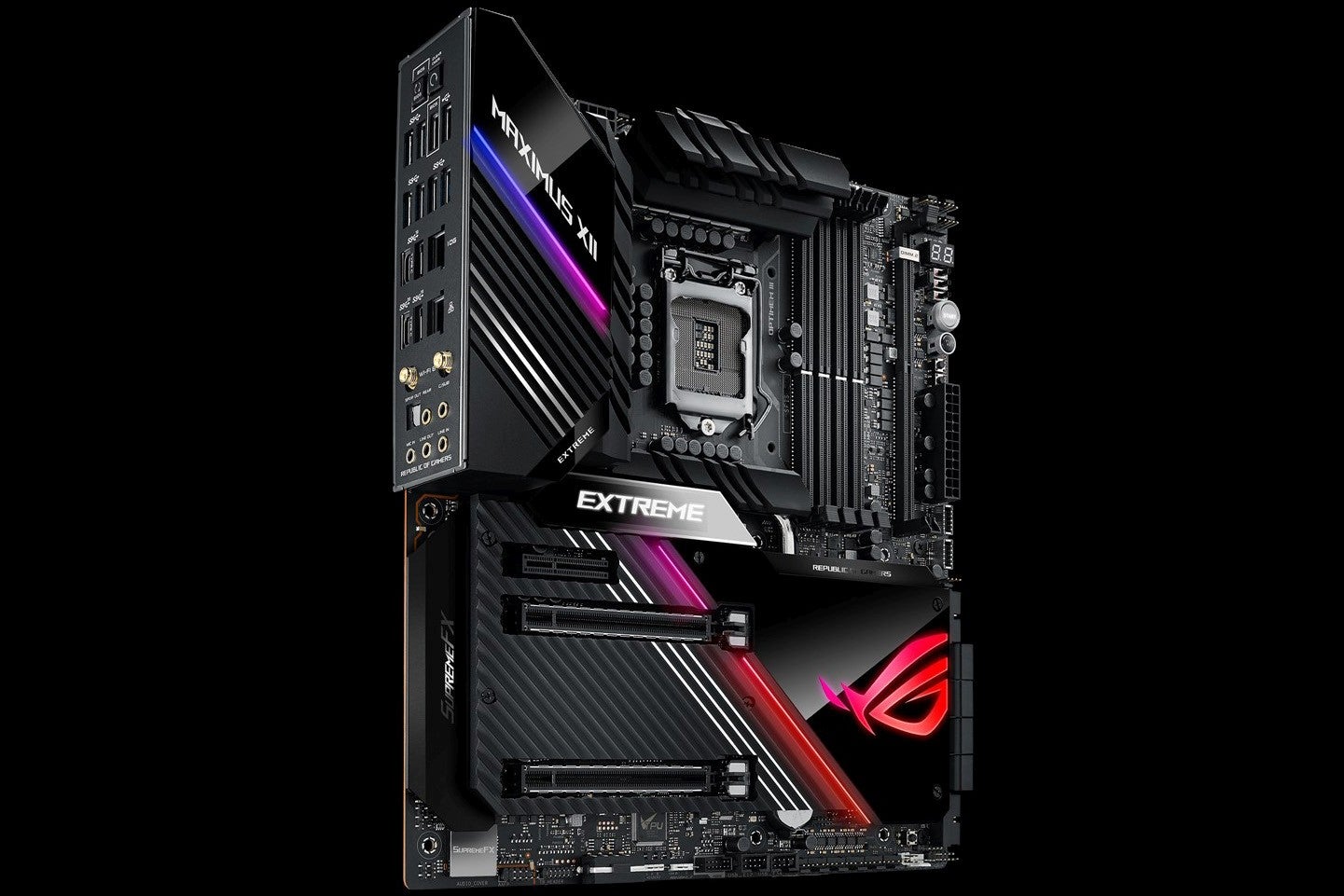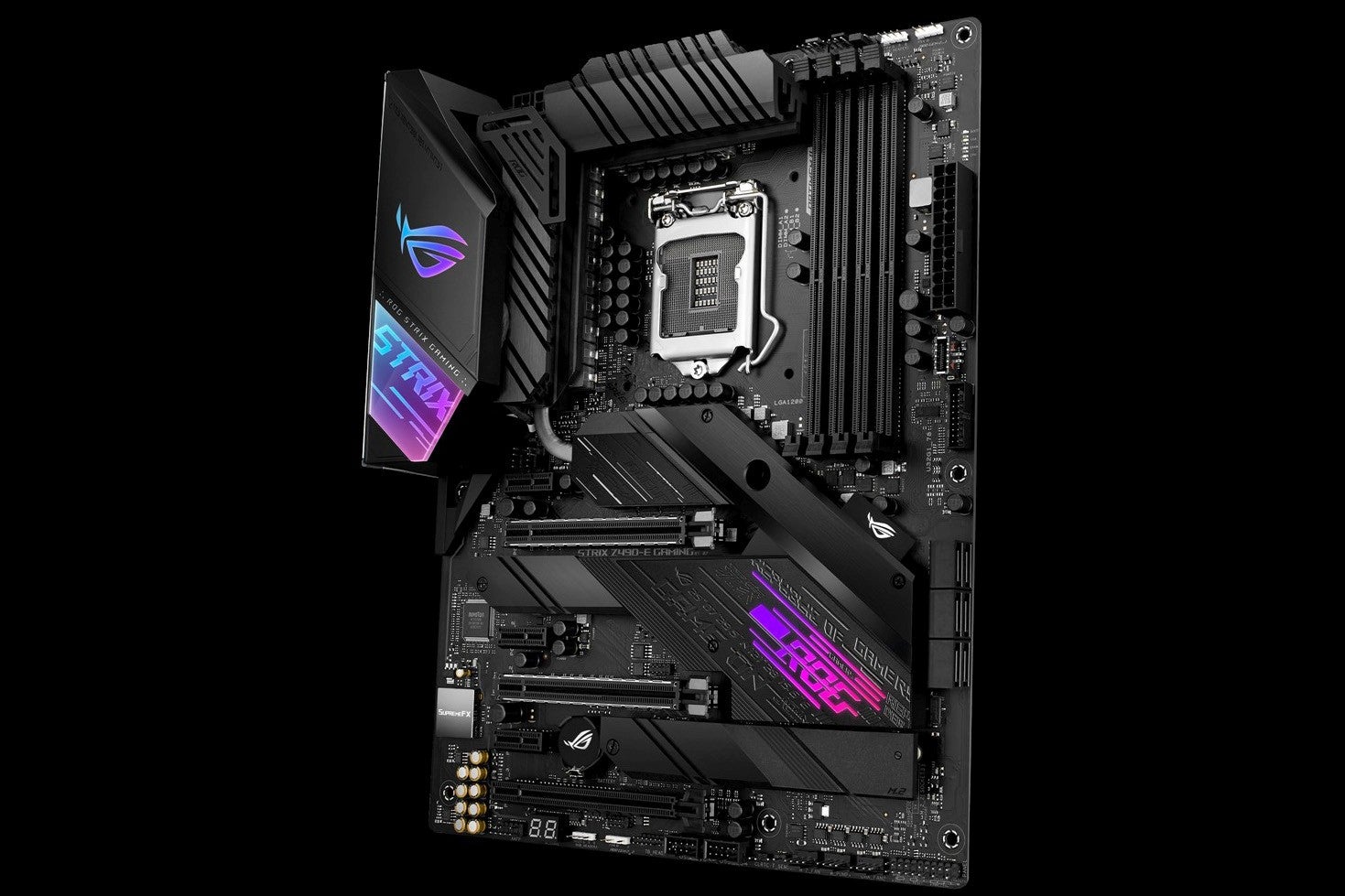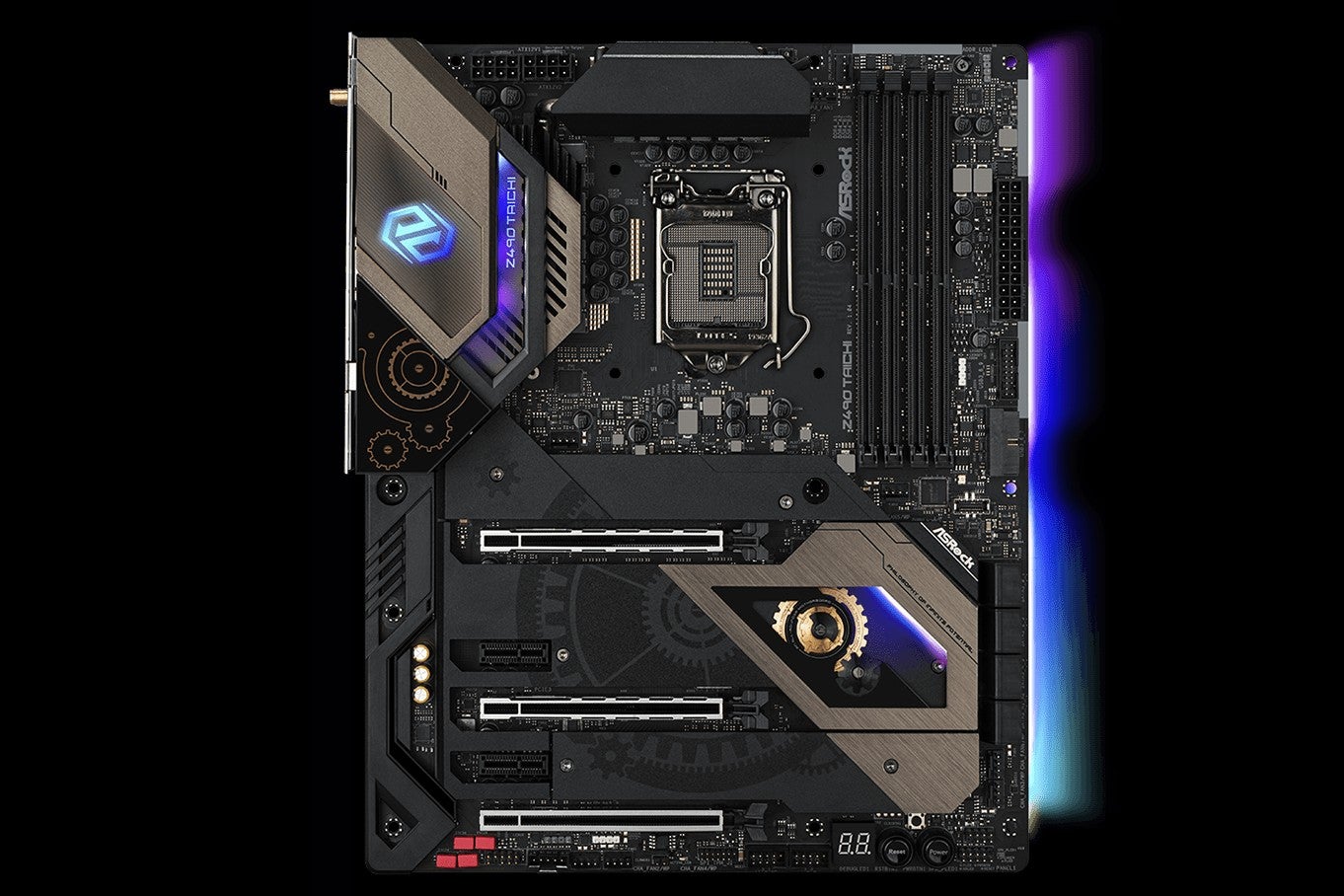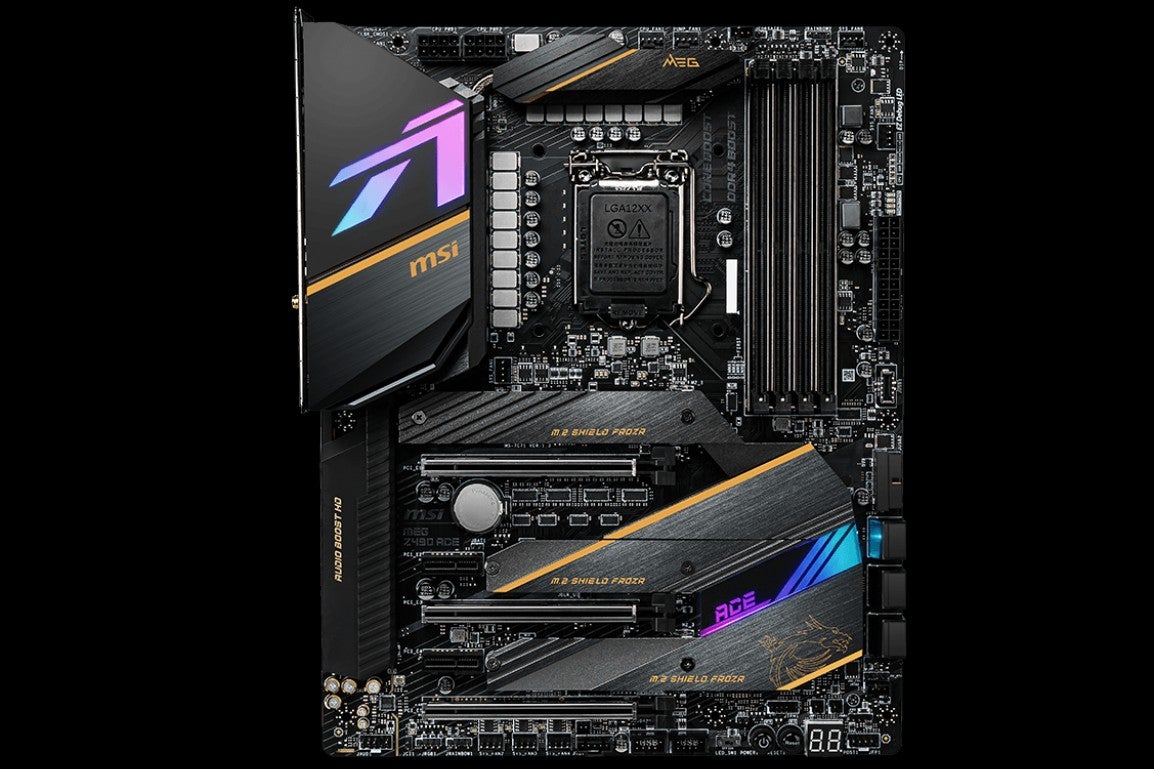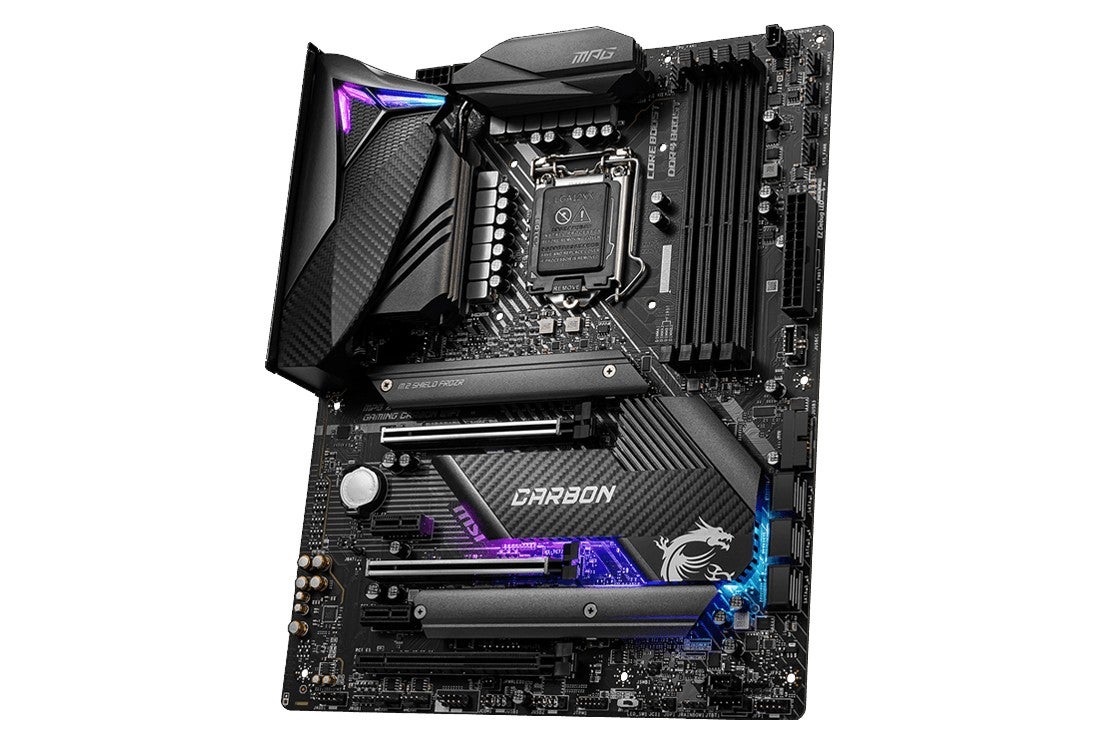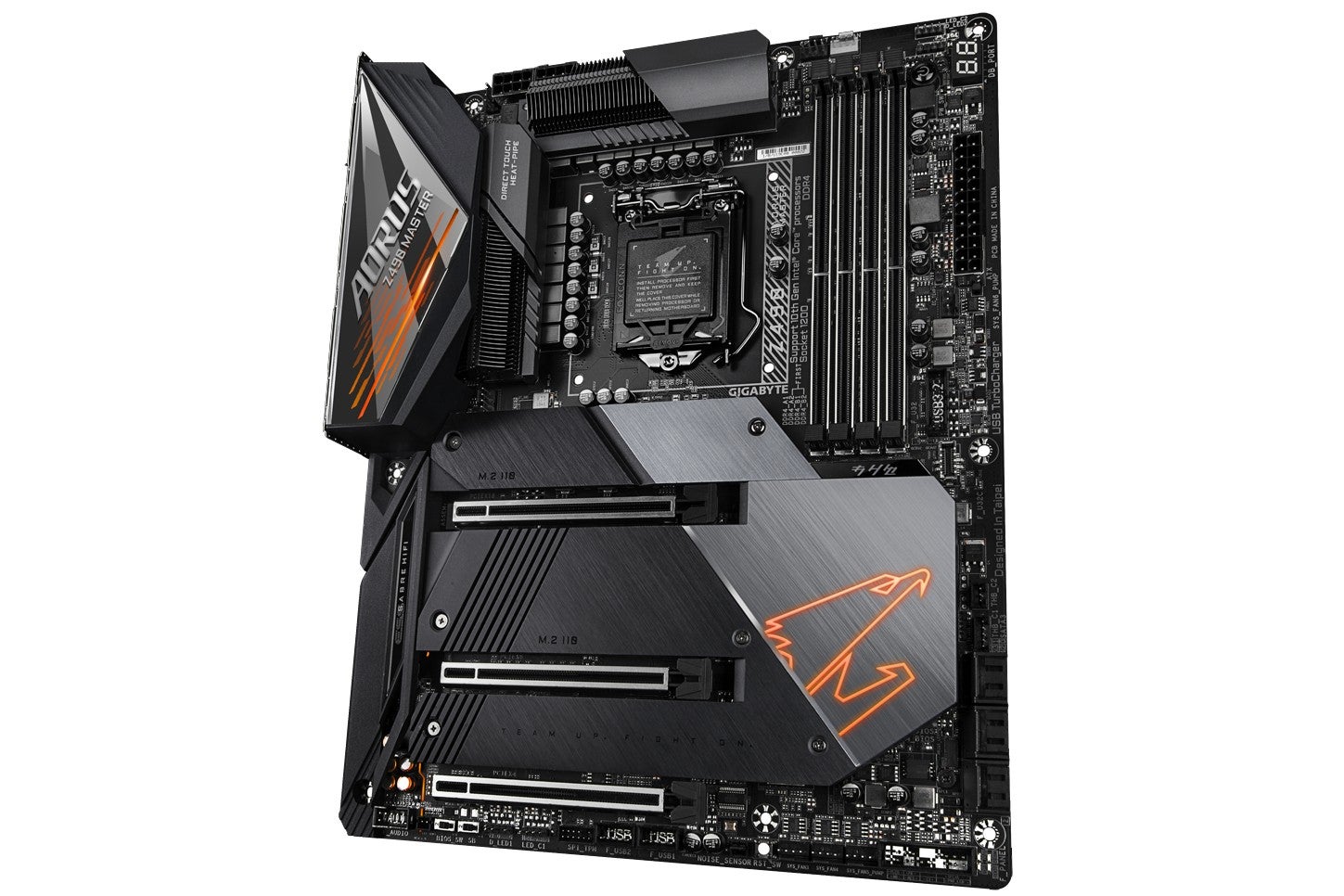Best Intel Z490 Motherboard: Top 6 options for Comet Lake
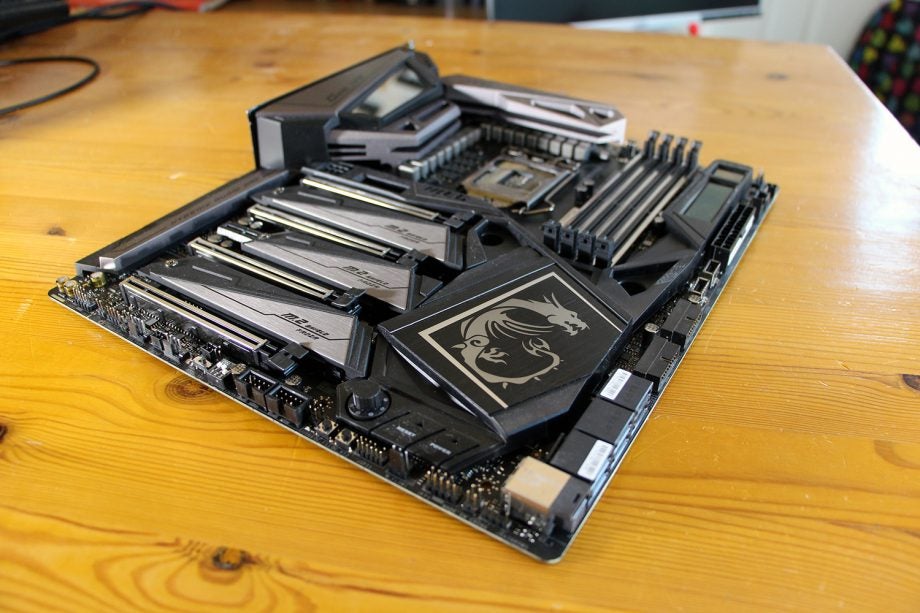
Intel has unleashed a full stack of new Comet Lake 10th Gen processors, but you’ll need a new motherboard in order to deploy one of these CPUs. There are plenty of choices to choose from, but what is the best Intel Z490 motherboard for your cash?
The new CPUs add more cores and more speed when compared to Intel’s previous chips, and the new Z490 chipset makes big strides in networking – it now supports 2.5Gbps Ethernet and WiFi 6. In other areas, though, the chipset remains largely unchanged from Z390, and there’s still no PCI-E 4.0 support.
We’ve rounded up six of the best new Z490 motherboards to find out which options have the best features, performance and price – so you can see exactly which boards should find a home in your new PC.
Each board in this test has been locked and loaded with the Intel Core i9-10900K CPU, an Nvidia GeForce RTX 2080 Ti graphics card, 16GB of memory and an NVMe SSD, and they’ve been tested in Geekbench, Cinebench and 3D Mark Time Spy.
We’ve also paid close attention to the areas that anyone should examine when buying a new board: the PCI, memory, storage and networking configurations, the rear I/O options, the variety of onboard connectors and the bonus features included for tweaking and overclocking. Aesthetics are important too – so we’ve noted what the boards look like and what RGB LED options are included.
Related: Best Intel Z490 Motherboard
1. Asus ROG Maximus XII Extreme
Incredible high-end features for enthusiasts – but a prohibitively high price
Pros:
- Stunning feature set
- Superb gaming performance
- Ample overclocking support
- Loads of RGB LEDs
Cons:
- Incredibly expensive
- No PCI-E x1 or 4.0
- Mediocre in some app tests
Review price: £850
Why we liked the Asus ROG Maximus XII Extreme
The Maximus XII Extreme is a mighty motherboard. It’ll set you back a monster £850, and a it’s got a fearsome set of features.
It has steel-supported memory slots, two PCI-E x16 sockets, eight SATA ports and four M.2 connectors – two of which support longer SSDs and are installed on their own expansion card. At the rear, the board has eight USB 3.2 ports and two Type-C connectors – including a super-fast USB 3.2 Gen2x2 port.
The board features a whopping 12 fan headers, six connectors for water-cooling, six onboard USB headers, four for lighting, eight temperature measurement points and a jumper to support a Liquid Nitrogen mode.
It looks sensational, with aluminium heatsinks full of RGB LEDs, and at the rear, there’s a huge plate of steel to bolster the board. In the middle of the board, there’s a LiveDash OLED screen, which can be used to monitor system information, update the BIOS and diagnose problems. Elsewhere, you’ll find a power button, POST display, toggles for safe booting and for testing profiles, and a customisable Reset button.
Tweakers will also be happy to find two eight-pin CPU power slots, a solid 16-phase power delivery system and both Clear CMOS and BIOS Flashback buttons on the rear I/O.
The board is fully-loaded with accessories: as well as the M.2 extension card, there’s a fan extension unit which adds fan headers, temperature sensor points and RGB LED connectors and a Thunderbolt extension card. Asus even includes a screwdriver.
Connectivity is stellar. The Asus is the only board here to include 10Gbps Ethernet alongside 2.5Gbps Ethernet, which means incredible speeds. WiFi 6 is also included. When it comes to audio, you’re covered by a superb SupremeFX S1220 chipset with an ESS ES9023P DAC.
The only minor specification quibble is that there is no third PCI-E x16 slot and no PCI-E x1 sockets, but there’s literally no room left on the board. Asus also hasn’t taken any PCI-E 4.0 gambles here.
The Maximus is the fastest board in the group in gaming tests, and it’s decent in Cinebench too – but a poor result in Geekbench’s single-core test does cast slight doubt on its application speeds.
Still, this isn’t necessarily a board to buy if you’re interested in pure application pace. It’s a stellar gaming board, and it’s packed with features – but it’s only worth buying if you’re truly going to use its features and push the boundaries in terms of performance and overclocking.
Latest live deals
Related: Best AMD motherboards
2. Asus ROG Strix Z490-E Gaming
Solid pace, a good range of features and a decent price – a good mid-range option
Pros:
- Reasonable app and gaming performance
- Solid mainstream features
- Mid-range price
Cons:
- Few high-end features
- No super-fast USB Type-C
Review price: £300
Why we liked the Asus ROG Strix Z490-E Gaming
The Asus Strix offering is the second-cheapest board in this group and, at £300, it’s only £40 more expensive than the MSI MPG.
The extra room in the budget means that this board has minor improvements in some key areas. It’s got a Thunderbolt 3 header onboard, for instance. The addition of a POST display and an over-voltage header makes overclocking and tweaking easier, and it has 16-phase CPU power – two more than the MSI. It also has an extra four-pin power connector – a feature shared with the MSI.
The Asus has one extra PCI-E x1 socket, so smaller expansion models are more welcome. Its ROG S1220A audio has dual OP amplifiers and SupremeFX shielding – so the Asus is a little better.
In other departments, the Asus matches the cheaper MSI board. It’s got four memory slots, six SATA ports and two M.2 connectors. Its PCI-E x16 options are the same, with good dual-GPU support and steel on the two upper slots, and the two boards look similar – they’ve got sizeable heatsinks and a rear I/O cover with RGB LEDs.
One thing to mention: the Asus board has marginally bigger heatsinks around the CPU socket, which could make installing fan-based heatsinks more of a challenge.
Connectivity is good and identical too: the Asus board has 2.5Gbps Ethernet, WiFi 6 and Bluetooth 5.1 At the rear, the Asus has five full-size USB 3.2 ports and four USB 2.0 connectors alongside one USB 3.2 Type-C port – so you get more USB ports, albeit without MSI’s high-speed USB Type-C. The Asus has no archaic PS/2 port, but it does have a BIOS Flashback button.
The board has eight fan and pump connectors and four USB headers – just like the MSI. However, MSI’s board went one better by offering four kinds of lighting header. The only thing missing on the Asus board are true high-end features – the board has a POST display, but no extra buttons.
The Asus board does offer reasonable performance: it’s good in Geekbench, but middling in Cinebench and 3D Mark. At this price, that’s decent, and it offers better pace than the MSI MPG.
The better performance, extra PCI-E x1 socket and better audio make us prefer the Asus – we’d only switch to the MSI if we had budgetary concerns or really wanted its extra lighting or USB Type-C features.
Related: Best PC Games 2020
Latest live deals
3. ASRock Z490 Taichi
Good gaming pace and storage features – but mediocre in applications
Pros:
- Decent gaming speed
- Good storage options
- Includes PCI-E 4.0
- Super-fast USB Type-C and Thunderbolt
Cons:
- Mediocre application speeds
Review price: £395
Why we liked the ASRock Z490 Taichi
The Taichi is the second-priciest board in this group, albeit by a slim margin – the MSI MEG model and Gigabyte Aorus board sit within £15 of this ASRock unit.
The ASRock board has one of the most distinctive looks here. Its southbridge heatsink has a smart, Steampunk-inspired design with RGB LEDs, and there are more lights in the rear I/O heatsink – and in the extra heatsink included along the right-hand side of the rear.
ASRock has paired that Steampunk design with some forward-thinking features. The big one is support for PCI-E 4.0 on two PCI-E x16 slots and one M.2 connector. It’s the faster storage standard that AMD introduced in 2019, but it’s not supported by Intel’s Z490 chipset.
This inclusion is a gamble as it’s quite possible that Intel’s CPU and chipset specifications will change between now and future releases that do support PCI-E 4.0 – which could mean that this board won’t properly function. If it works, though, it means you’ll get support for faster storage and graphics cards.
The Taichi sees eight SATA ports – two more than rivals. It has five onboard USB connectors – one more than rivals. It has a super-fast USB 3.2 Gen2x2 Type-C port, like the MSI but unlike the Aorus. It’s got a Thunderbolt connector, like the Gigabyte.
The ASRock has a solid Realtek ALC1220 audio chip with an ESS 9218 DAC, and WiFi 6 and 2.5Gbps Ethernet alongside a Gigabit Ethernet port. It has three M.2 connectors, steel PCI-E x16 slots and solid dual-GPU support alongside a POST display, power and reset buttons and both Clear CMOS and BIOS Flashback buttons. In these respects, it’s virtually identical to its rivals.
The ASRock has two eight-pin CPU power connectors, but it only has a middling 14-phase power delivery system. The MSI has 16+1-phase power and is, therefore, better for overclocking. You get eight fan and pump connectors and four lighting headers, and at the rear, you get seven USB 3.2 ports – the same as the MSI and more than the Aorus.
When it comes to application performance, the Taichi is mediocre, but it was the second-best board here for gaming speed – marginally ahead of both competitors.
If gaming speed is important to you, then the Taichi is better than its competitors – and it’s superior when it comes to storage too.
Latest live deals
Related: Best Graphics Card
4. MSI MEG Z490 ACE
Superb application pace and solid features make for a mid-range winner
Pros:
- Excellent application performance
- Solid mainstream features
- Classy aesthetics
Cons:
- Only mediocre in games
Review price: £390
Why we liked the MSI MEG Z490 ACE
MSI’s MEG Z490 ACE board is only five pounds cheaper than ASRock’s effort, and costs £10 more than the Gigabyte Z490 Aorus – so it’s sat right between those two keen rivals.
Unsurprisingly, the MSI has a solid basic specification that shares many attributes with both of those boards. It’s got four DDR4 memory slots and three steel-support PCI-E x16 sockets with solid dual-GPU support – just like the competition. It has three M.2 connectors, all with their own heatsinks, and it has power and reset buttons on the board alongside with BIOS Flashback and Clear CMOS buttons at the rear. There’s a POST display too.
Audio is handled by a Realtek ALC1220 codec with an ESS SABRE9018Q2C DAC – a good loadout that matches rivals. The MSI has WiFi 6 and Bluetooth 5.1 alongside both 2.5Gbps and Gigabit Ethernet connectivity; the Aorus falls behind here with only one Ethernet port.
On the board itself, you’ll find eight fan and cooling pump connectors and four lighting headers, which is standard for this part of the market.
Getting closer reveals minor differences between the MSI and the competition. This board is the best out of the three mid-range offerings for overclocking: it shares its two eight-pin CPU power connectors with its rivals, and it improves on those boards by offering a 16+1 power phase delivery system.
It has two PCI-E x1 sockets, which is better than the Aorus – that board eschews them altogether. However, while the MSI has six SATA ports, the ASRock goes two better by offering eight. The MSI has no Thunderbolt.
At the rear, the MSI has five USB 3.2 ports alongside one of those super-fast USB 3.2 Gen2x2 Type-C ports. The ASRock is better here because it has more full-size USB 3.2 ports. The Aorus is arguably worse – it has more USB 2.0 ports, but it doesn’t have those super-fast Type-C connections.
MSI’s board looks classier than its competitors. Its heatsinks combine dark brushed metal with gold accents. There are RGB LEDs in the heatsinks, as usual, but fewer than on the bold ASRock. The MSI also has slightly smaller heatsinks around the CPU socket, which aids smooth building.
The MSI is the best board in the group when it comes to application speed – it was the fastest here in three of our four app tests. It’s only mediocre in gaming, though.
That gaming result means the ASRock is the better option for gaming speed, but the MSI MEG is the best motherboard in the group if you need application performance – and it’s got decent features too.
Latest live deals
5. MSI MPG Z490 Gaming Carbon WiFi
Affordable and fine for mainstream computing, but not feature-packed or fast
Pros:
- Affordable compared to rivals
- Solid mainstream features
- Super-fast USB Type-C
Cons:
- Underwhelming performance
- No high-end features
- Less versatile than competitors
Review price: £260
Why we liked the MSI MPG Z490 Gaming Carbon WiFi
MSI’s MPG board is the cheapest board in this Z490 group, which means it has less ornamentation than some of its peers. It still looks good, though – it still has a hefty rear I/O cover with carbon-fibre detail and RGB LEDs alongside a sizeable, illuminated southbridge heatsink.
This board may be the cheapest here, but the £260 price still leaves room in the budget for some impressive features. The MPG has WiFi 6 and 2.5GBps Ethernet, and the back panel has a USB 3.2 Gen 2×2 Type-C port – which is the fastest USB port currently available.
The rest of the specification offers good quality, albeit with more conventional features. There are two M.2 connectors, and both have heatsinks. There are three PCI-E x16 slots, with the top two fully set up for dual-graphics and bolstered with steel, and there are two PCI-E x1 connectors. Audio is handled by Realtek ALC1220 hardware – a fine mainstream chipset but without any beefed-up features.
At the rear, you’ve got a conventional layout including four USB 3.2 ports, two USB 2.0 sockets, five audio jacks and a PS/2 port. The board is littered with fan, RGB and water-cooling connectors, too, and you get the conventional six SATA ports and four DDR4 slots. There’s also an extra four-pin CPU power plug.
The lower price does mean that some features are missing. There are smaller heatsinks, no POST display and no onboard buttons. The Asus has an extra PCI-E x1 slot and better audio.
The MPG is not a particularly good performer, either, with the worst results in the group in Cinebench and middling pace in both Geekbench and 3D Mark Time Spy.
The MPG’s lower price makes it a reasonable option for affordable mainstream performance, but if you can possibly afford it we’d recommend jumping up to the Asus – it’s faster, with better features.
Related: Intel 10th Gen desktop CPU
Latest live deals
6. Gigabyte Z490 Aorus Master
Good looks, but underwhelming performance and some missing features
Pros:
- Impressive aesthetics
- PCI-E 4.0 support
- Some decent mainstream features
Cons:
- Sluggish performance
- No second Ethernet port
- No super-fast USB Type-C
Review price: £380
Why we liked the Gigabyte Z490 Aorus Master
The Gigabyte Z490 Aorus Master costs a solid £380, but it undercuts its rivals from MSI and ASRock by a few pounds.
The lower price doesn’t mean that the core specification has been cut back. This board has four memory slots with support for marginally quicker speeds than both competitors, and its memory slots and PCI-E x16 sockets are all bolstered with steel.
The Gigabyte has three M.2 connectors and six SATA ports – only the ASRock is better. And, like the ASRock, the Gigabyte product includes tentative support for PCI-E 4.0. This future-proofed standard isn’t supported by Intel’s Comet Lake CPUs and chipsets, but it’s likely to be included in Rocket Lake chips. While there’s no guarantee that future hardware will work flawlessly, it’s a welcome feature to have if it functions.
The Gigabyte has solid features elsewhere. It’s got the usual eight fan and pump connectors and four lighting headers, and it has two Thunderbolt connectors – while the ASRock only has one. It has Realtek ALC1220 audio with an ESS ES9118EQ DAC, which matches rivals, and it also joins the competition by including 2.5Gbps Ethernet and WiFi 6.
The Gigabyte looks excellent, with stunning brushed aluminium heatsinks and RGB LEDs. The layout is solid, with a POST display and power button at the top and some neat BIOS switches at the bottom.
Sadly, the Gigabyte does have some odd holes in its specification. This is the only mid-range board here to not pair its faster wired networking connection with a separate Gigabit Ethernet port. And while the Aorus has five USB 3.2 ports and a Type-C connection, it doesn’t have the super-fast USB 3.2 Gen2x2 Type-C connection – and it struggles along with four slower USB 2.0 ports.
It matches both rivals with two eight-pin CPU power sockets, and its 14-phase power design means it’s reasonable for overclocking. It also has two temperature sensor headers, which neither rival offers. For pure electrical power, though, the MSI MEG board is better thanks to its 16+1 phase power delivery.
There’s one striking omission from the middle of the board: no PCI-E x1 ports. These are less useful these days, especially with built-in WiFi, but it’s still surprising.
When it comes to speed, the Aorus disappoints. Its 3D Mark and Geekbench results are the worst in the group, and it’s only middling in Cinebench. We’re only talking about tiny margins here – your performance will be influenced far more by your choice of components elsewhere. But the Aorus isn’t the board to buy if you’re chasing top speeds.
The underwhelming performance, lack of a second Ethernet port and absence of faster USB Type-C mean that it’s difficult to recommend the Aorus despite some handy tweaking features. The ASRock Taichi is better for gaming, and the MSI MEG is superior in applications.
Latest live deals
Best Intel Z490 Motherboard Round Up
- Best Intel Z490 motherboard: Asus ROG Maximus XII Extreme
- Best mainstream Intel Z490 motherboard: Asus ROG Strix Z490-E Gaming
- Best Intel Z490 motherboard for gaming: ASRock Z490 Taichi
- Best Intel Z490 motherboard for applications: MSI MEG Z490 ACE
- Best budget Intel Z490 motherboard: MSI MPG Z490 Gaming Carbon WiFi
- Another Intel Z490 motherboard: Gigabyte Z490 Aorus Master


